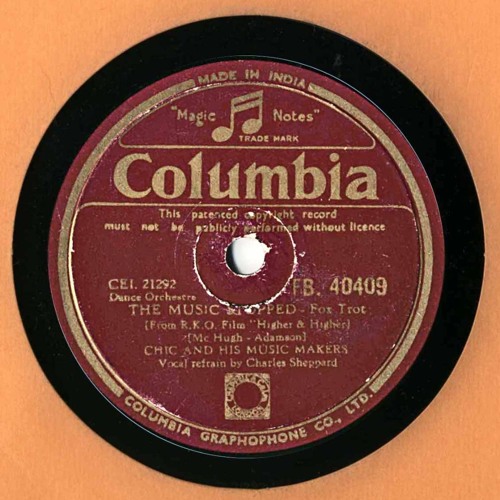
One day in the late 1940s, musicians Hal and Henry Green asked Bombay businessman JJ Davar if he’d lend them his extensive collection of swing discs so that they could start a jazz record listening club. After tossing the idea around for a while, they decided that it would be a better idea to set up an organisation to perform live music instead.
Trumpet player Frank Fernand joined the conversations and, on November 28, 1948, the Bombay Swing Club gave its inaugural concert at the Cama Hall.
Though I mentioned the Club in Taj Mahal Foxtrot, I only recently obtained details about the organisation’s origins, thanks to material mailed to me from Australia by the amazing Maxine Steller. She not only sent me a copy of an autographed programme of that concert, she also had a clip from the Sunday Standard that had been written on the BSC’s first anniversary.
The article describes in some detail the trouble that Bombay Swing Club’s debut concert ran into: the worst cyclone the city had witnessed in decades.
“Electricity having failed, Eddy Jones, Clarence Bean and Henry Green worked feverishly at night with candles (bought at Rs ¼ a piece) sawing, cutting, hammering, painting to get the music stands and stage props together on time,” the article said.
The concert, though, was a grand success and the “packed house roared its its appreciation at the end of the show".

After Henry Green emigrated to the UK in 1949, his brother Hal took responsibility for keeping the Club alive. Performances by the Bombay Swing Club’s “Ork” were held at the Taj Mahal Hotel, Sundarbai Hall, St Xavier’s College, Eros Theatre and the Central YMCA, which offered the musicians rehearsal space.
“The Club welcomes all music-lovers into its fold and not only performers,” the Sunday Standard reported. “Among its fans are surgeons, typists, mill owners, railwaymen, socialites, journalists, clerks, musicians and stenographers.”

For the Club’s first anniversary concert at the Taj, an orchestra of 33 musicians was assembled to play standards and original compositions: Naga Serenade by the trumpet player Chic Chocolate, Swing Finale and Oriental Fantasy in Swing by the trumpet player Frank Fernand, Lapis Lazuli and Woodwind Rhapsody by reed player Hal Green and Carinesque and Quince Jam Jump by saxophonist Johnny Gomes.
“It is a pity that are no facilities here in the East for publishing, else these compositions would be hits if they were to be composed in the West,” the Sunday Standard grumbled. “Efforts are, however, being made by the Club on behalf of composers to get their music published abroad.”

The article added, “Hal has always got something new up this sleeve for the entertainment of swing fans and goes all out to make each show a success. (Confidentially, he loses six to eight pounds after each concert.”
It concluded, “Most performers have to sacrifice their space time to write music late into the night and give up lucrative engagements for rehearsals. But they do not mind it, provided the show goes on.”

It isn’t clear when the BSC wound up and the internet isn’t much help. A Google search throws up sites relating to latter-day Bombay swing clubs that promise members “confidentiality, secrecy, safety and fun”. The pictures on these web pages make it clear that the people involved in these new clubs have no use for the sharp suits worn by members of the original organisation – or any clothing at all. The sites make no mention of jazz.
The BSC didn’t make any recordings but one of its members, Chic Chocolate, pictured below at a concert, cut several discs in the 1940s. Here’s his version of The Music Stopped from 1945. It had been featured in the film Higher and Higher, which had been made two years earlier, starring the already legendary crooner Frank Sinatra.

This recording, from the Marco Pacci collection, features Charles Sheppard on vocals.
PS: In 2017, the legendary photographer and curator Prashant Panjiar decided to use the images from Foxtrot as the basis for an exhibition about Goan jazz musicians at the Serendipity Arts Festival. He named it after this track: The Music Stopped But We Were Still Dancing.
























Write a comment ...